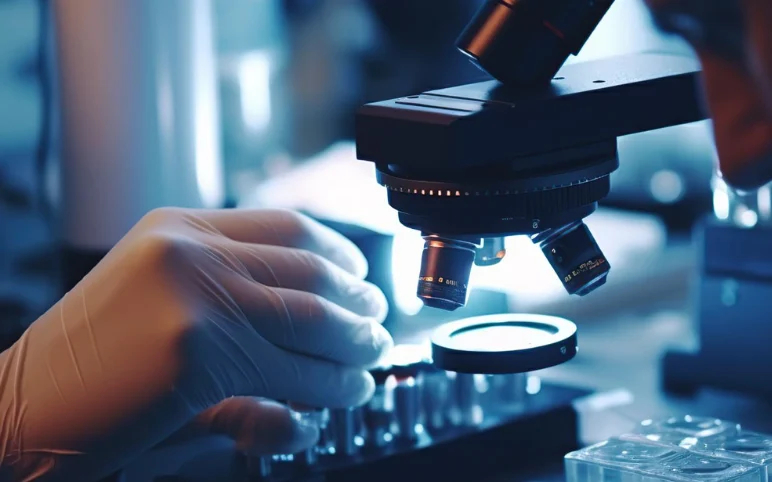Boston Scientific Launched Next-Generation Insertable Cardiac Monitor
On October 2, 2023, Boston Scientific, announced the launch of its next-generation LUX-Dx II+ insertable cardiac monitor (ICM) system.
Long-term monitoring is provided by the system for arrhythmias connected to conditions like AFib, cryptogenic stroke, and syncope. Before notifying clinicians, Boston Scientific designed the LUX-Dx II+ with dual-stage algorithms to find and confirm potential arrhythmias. When the clinicians eventually receive an alert, it gives them useful information for clinical decision-making.
Additionally, LUX-Dx II+ has remote programming capabilities. Without an in-patient appointment, these enable doctors and care teams to modify event detection settings and record symptoms.
The dual-stage algorithms used by the system, according to Boston Scientific, can recognize episodes of AFib, atrial and ventricular tachycardia, bradycardia, and rhythm pause. A new premature ventricular contraction (PVC) burden is included in the algorithms. As a result, whenever predetermined thresholds or parameters are exceeded, the device can identify arrhythmias.
Then, additional verification filters are used, along with more night-time programming options. The night-time programming specifically for bradycardia and pause episodes aids in eliminating false-positive detections and pointless episodes.
“The LUX-Dx II+ ICM System builds on a strong foundation of cardiac diagnostic technologies at Boston Scientific to provide care teams with the necessary data for critical decision making,” said Scott Olson, SVP and president, of Cardiac Rhythm Management and Diagnostics, Boston Scientific. Scott added, “With enhanced and new diagnostic algorithms, physicians will receive timely, accurate, and actionable insights to help them make clinically meaningful decisions.”
As per DelveInsight’s “Cardiac Monitoring Devices Market” report, the global cardiac monitoring devices market will grow at a CAGR of 5.4% during the forecast period from 2023 to 2028. The demand for cardiac monitoring devices is primarily being boosted by the rising prevalence of cardiovascular diseases, technological advancements in product development, increasing geriatric population, sedentary lifestyle, and increasing awareness programs regarding cardiovascular health.
Phillips-Medisize teamed up with GlucoModicum to Develop an Innovative Needle-Free Continuous Glucose Monitor
On October 3, 2023, Phillips-Medisize, a leader in the design, engineering, and manufacturing of pharmaceutical drug delivery, in-vitro diagnostic, and MedTech devices, partnered with GlucoModicum, a cutting-edge medtech business with headquarters in Finland, to develop and eventually commercialize a wearable, non-invasive, proprietary device that eliminates patient care and technological barriers to continuous glucose monitoring (CGM).
Magnetohydrodynamic (MHD) technology can be used to apply a small amount of energy directly to interstitial fluid, the body fluid between blood vessels and cells, to drive it to the surface of the skin for quick and simple extraction of a glucose sample. This is how GlucoModicum found a more practical, quick, and gentle CGM alternative.
In addition to mechanical and electrical engineering, connectivity, material science, miniaturization, supply chain management, software development, manufacturing, testing, quality assurance, and regulatory compliance, Phillips-Medisize also made use of its special expertise in these fields.
The requirements for submissions to regulatory bodies in the markets where the company plans to introduce this device were discussed with GlucoModicum by Phillips-Medisize. The GlucoModicum team considered the recommendations and regulatory knowledge to be insightful and helpful for their plans for a commercial launch.
Once thorough clinical studies and regulatory approval are finished, plans are being made to use Phillips-Medisize’s global manufacturing footprint, extensive supply chain network, and advanced assembly automation capabilities to produce hundreds of millions of devices and biosensors. Together, the companies are starting to look into additional potential applications for this cutting-edge technology to help with the management of other diseases.
“We wanted to create a solution that is needle-free, accurate, and more affordable so people would better monitor their glucose,” said Jokke Mäki, managing director of GlucoModicum. Jokke commented, “Working with Phillips-Medisize, we applied compelling science to develop a world-class product that may help billions of people better manage their diabetes.”
“We started with ideas, concepts, and drawings,” said Homer Fairley, business development manager for Phillips-Medisize. Homer added, “The day we provided the finished sample product to GlucoModicum was a moment of celebration for both parties, as it brought the possibilities to life. Now that there is a proven concept, we look forward to the opportunity to leverage Phillips-Medisize’s high-volume manufacturing capabilities to produce hundreds of millions of units on time and in a cost-effective manner. That’s a big benefit to this project.”
According to DelveInsight’s “Blood Glucose Monitoring Systems Market” report, the global blood glucose monitoring systems market was valued at USD 13.06 billion in 2022, growing at a CAGR of 7.72% during the forecast period from 2023 to 2028, to reach USD 20.40 billion by 2028. The escalating demand for blood glucose monitoring systems is predominantly attributed to the increasing prevalence of diabetes among the population across the globe and the growing burden of the geriatric population who are susceptible to developing hyperglycemia. In addition, the spike in technologically advanced blood glucose monitoring devices product launch and government initiatives to raise awareness regarding proper diabetes management, among others are the factors likely to spur the global blood glucose monitoring systems market.
Boston Scientific Won FDA nod for Intravascular Ultrasound System
On September 27, 2023, Boston Scientific announced that the US Food and Drug Administration (FDA) cleared the company’s Avvigo+ multi-modality guidance system.
Intravascular ultrasound (IVUS) and fractional flow reserve (FFR) are provided by this next-generation system. To deliver a top-notch IVUS vessel imaging and physiology experience, it makes use of cutting-edge hardware and software. Procedures involving percutaneous coronary intervention (PCI) are among the uses of the system. The technology contributes to the development of the business’ Avvigo guidance system II. It allows for quicker, more effective procedures like atherectomies and angioplasties for patients with coronary artery disease.
The AI programme called automated lesion assessment has important features. Both precise vessel measurements and automation of important procedural steps are provided. By acquiring IVUS images more quickly, the system also shortens the procedure’s duration. Last but not least, it offers improved guidance with a physiology graph that offers a treatment plan for the coronary artery that is diseased.
“We are pleased to introduce U.S. clinicians to the next-generation Avvigo+ multi-modality guidance system, which builds upon the Avvigo Guidance System II and provides fast, intuitive, and accurate vessel and lesion assessment capabilities for percutaneous coronary interventions,” said Lance Bates, president, Interventional Cardiology Therapies, Boston Scientific. Lance Bates mentioned, “Coming on the heels of the updated ACC guidelines recommending intracoronary imaging during PCIs, we believe this enhanced and automated tool will help physicians optimize these procedures to provide better outcomes for their patients with coronary artery disease.”
According to DelveInsight’s “Intravascular Ultrasound Market” report, the global Intravascular Ultrasound (IVUS) market was valued at USD 714.85 million in 2022, growing at a CAGR of 7.10% during the forecast period from 2023 to 2028 to reach USD 1,065.26 million by 2028. The demand for Intravascular Ultrasound (IVUS) is primarily being boosted due to the rising prevalence of cardiovascular diseases (CVDs) and their risk factors such as obesity, diabetes, and high blood pressure, increasing technological advancements coupled with increasing product launches, which are expected to create a positive impact on the market growth during the forecast period from 2023-2028.
Enable Injections Received First US FDA Approval
On October 2, 2023, Enable Injections, Inc., announced that the EMPAVELI Injector (enFuse®) was approved by the US Food and Drug Administration (FDA) for the subcutaneous delivery of EMPAVELItpegcetacoplan), which is sold in the country by Apellis Pharmaceuticals, Inc. for adults with paroxysmal nocturnal hemoglobinuria (PNH).
The EMPAVELI Injector is a small, wearable injector created to simplify self-administration while causing the least amount of interference in patients’ daily lives. The enFuse® technology is designed for simplicity and flexibility, allowing for at-home self-administration or in-clinic use. It allows hands-free, hidden needle drug delivery of up to 25 mL.
“The approval of the EMPAVELI Injector will enhance the patient experience of administering a large volume (20 mL) of subcutaneous therapy,” said Michael D. Hooven, Enable Injections’ Chairman and CEO. Michael commented, “Enable’s purpose is to redefine drug delivery for the benefit of patients. We are excited about achieving this milestone and are looking forward to growing enFuse® partnerships to improve the patient experience around the world.”
Matthew Huddleston, Enable Injections’ Chief Technology Officer and Executive Vice President of Business Development said, “The EMPAVELI Injector is the first purely mechanical, large-volume, on-body subcutaneous drug delivery device.” Matthew added, “The technology was designed while always keeping the patient at the forefront. Its simplicity empowers patients to confidently self-administer their therapy at home with greater mobility.”
According to DelveInsight’s “Wearable Injectors Market” report, the global wearable injectors market was valued at USD 6,725.58 million in 2022, growing at a CAGR of 12.78% during the forecast period from 2023 to 2028 to reach USD 13,815.56 million by 2028. The wearable injectors market is indorsing optimistic growth primarily owing to the increasing incidences of chronic conditions such as cancer, diabetes, and cardiovascular disorders among others. Further, rising concern over the hazards and limitations related to needle sticks, rising need & demand for patient compliance to treatment, and rising innovations & technological advancement in the device will create a requisite for wearable injectors in the market. In addition, the increasing product launches and approvals, and the rising reimbursement scenarios across the globe will further upsurge the overall growth of the wearable injectors market. Therefore, the market for wearable injectors is estimated to grow at a significant CAGR during the forecast period from 2023 to 2028.
Amber Implants Announced the Start of Clinical Trial with VCFix® Spinal System
On October 3, 2023, Amber Implants, an innovative medical technology company developing next-generation implants for spinal injuries, announced the official start of the clinical trials for the VCFix® Spinal System.
In this first-in-human clinical trial, the VCFix® Spinal System implant’s efficacy and safety will be evaluated in patients with vertebral compression fractures. A user-friendly, single-use sterile surgical kit is included with the implant, ensuring perfect traceability and lowering the risk of infection.
Every year, more than 8.6 million people experience various types of vertebral fractures. These fractures result in excruciating back pain, decreased mobility, and a higher mortality rate in an elderly population that is already at risk.
With its novel approach to treating a variety of vertebral fractures, the VCFix® Spinal System is poised to do away with bone cement while maintaining compatibility. This system is engineered for superior mechanical strength, maximum fracture reduction, and anatomical restoration, and it can be used for both single- and multi-level posterior fixation. Through pedicle anchorage, the VCFix implant not only promotes natural healing but also improves stability and optimizes load distribution within the spine.
Dr. Banafsheh Sajadi, Co-Founder and Chief Executive Officer, of Amber Implants added “This news marks a key milestone in the product development of the VCFix® Spinal System, and we aim to expand the clinical trial to further validate the device’s versatile applications. Our comprehensive approach is a significant leap forward in spinal healthcare, promising safer and more effective treatments for patients with both traumatic and osteoporotic vertebral fractures.”
According to DelveInsight’s “Spinal Surgery Devices Market” report, the global spinal surgery devices market is estimated to grow at a CAGR of 5.65% during the forecast period from 2023 to 2028. The spinal surgery devices market is observing remarkable market growth owing to various factors such as the subsequent rise in spinal disorders across the globe, increasing road accidents, and increasing demand for minimally invasive surgical procedures among others. Further, the increasing demand for technologically advanced spinal surgery devices in the market will also spur market growth in the forthcoming years. Additionally, a rise in spending on spinal surgery products along with the increasing product launches and approvals, and other factors will create a requisite for the spinal surgery devices in the market. Therefore, the market for spinal surgery devices is estimated to grow at a substantial CAGR during the forecast period from 2023 to 2028.
Loci Orthopaedics Announced Completion of Patient Enrollment for Its Clinical Feasibility Study of Its “InDx” Thumb Base Joint Replacement
On October 3, 2023, Loci Orthopaedics announced that it completed its enrolment of a 15-patient clinical feasibility study for its patented InDx Implant System.
The Thumb Hemi-Arthroplasty with Natural Kinematics (THANKS) study examines the surgical implantation of the device as well as enhancements in grip, quality of life, and pain for those with thumb base joint arthritis.
Dr. Brendan Boland, Executive Chairperson of Loci Orthopaedics, said, “Thumb base joint arthritis is a very prevalent and disabling condition that needs a better surgical solution. It is a significant milestone for the company to achieve completed enrolment in this clinical study. The company is very grateful to the study participants who are supporting the development of a much-needed new treatment option. We look forward to completing follow-up and reporting on the results next year.”
Primary Clinical Trial Investigator Prof. Filip Stockmans, Specialist Orthopaedic Hand Surgeon, KU Leuven, Belgium, commented, “There is a cohort of younger active patients that currently are not optimally served by the treatment options available to them, particularly in the US. The InDx Implant System may provide an additional treatment alternative for a large cohort, with the potential to treat these patients in a less invasive fashion than what is currently available. The InDx Implant System is the first implant to mimic the complex biomechanics of the thumb base joint, with the goal of restoring native biomechanics.”
Barry Russell, Chief Executive Officer of Loci Orthopaedics, added, “There is a significant unmet clinical need to provide an evidence-based surgical solution for this condition. This study will help demonstrate the feasibility of this implant use as well as the positive clinical outcomes that an evidence-based solution can bring. The novelty of this solution is reflected in its De Novo status with the US FDA as it is not like any prior implant developed to date. We look forward to continuing our work with the FDA to gain market approval for this important advancement in CMC surgery.”
According to DelveInsight’s “Orthopedic Implants Market” report, the global orthopedic implants market is estimated to grow at a CAGR of 5.46% during the forecast period from 2023 to 2028. The orthopedic implants market is slated to witness prosperity owing to factors such as the increasing prevalence of orthopedic diseases such as arthritis, osteoporosis, and others, a growing burden of the geriatric population, the rising number of road accidents associated and other injuries, and the growing focus on improving the safety, affordability, and usability of orthopedic implants for people are further expected to result in the appreciable revenue growth in the orthopedic implants market during the forecast period (2023-2028).



